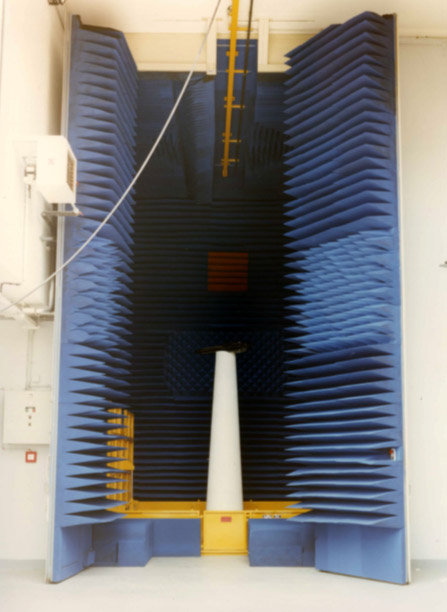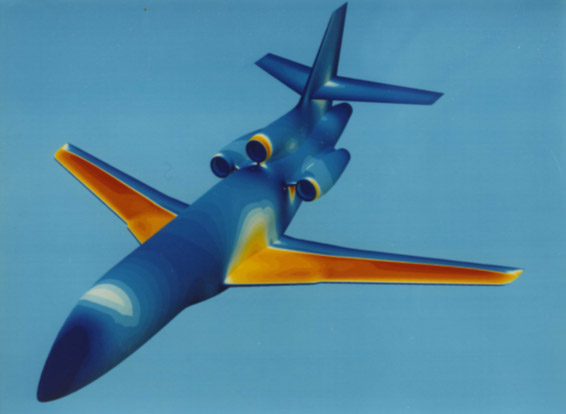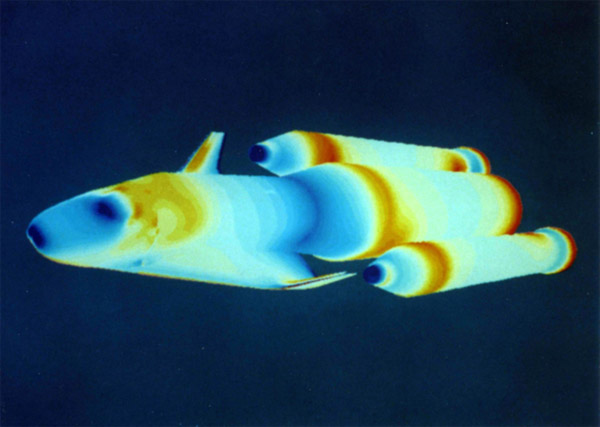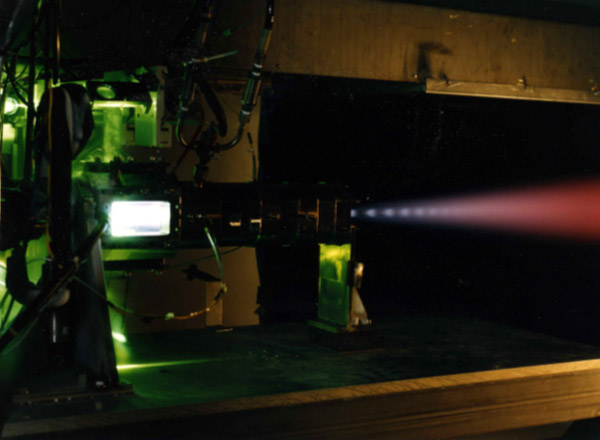- ONERA
- About ONERA
- History
- 1984 to 1996 - New orientations
1984 to 1996 - New orientations
ONERA positioning said, a bridge between research and industry
In 1983, the public sector democratization law caused ONERA’s statutes to be updated in order to render them compliant (Decree of 1984). They now stress the importance of the mission of transferring research results to the aerospace industry. Thus, ONERA must carry out its mission for the State as well as for the benefit of French industrialists, while also collaborating with the University and the CNRS laboratories.
The foundations of current issues are laid
End of the Cold War: Rethinking defense means
Between 1984 and 1996, after the end of the "Cold War", all defense means had to be redesigned to address the variety of threats and the diverse theaters of operations. In order to meet this new weapon system optimization need, multidisciplinary teams and system studies became a priority.
Fighter aircraft must be versatile: air defense, reconnaissance, low altitude penetration, ground attack; they must accomplish these tasks in all weather, day and night, under combat conditions and in a complex electromagnetic environment. Thus, the versatility of the Rafale necessitated numerous tests in the Modane S2 wind tunnel. The optimization of this aircraft demanded the synthesis of multiple technologies, in the fields of aerodynamics, propulsion, materials and structures, generalized automatic control, optoelectronics, microelectronics and signal processing.
The ASMP missile is another successful example of optimization. It is the fruit of close collaboration between ONERA and Aerospatiale (whose missile branch later became MBDA). Since then, efforts have continued to perfect this original technical branch that confers a formidable deterrent power to our fighter aircraft. Studies on liquid fuel ramjet propulsion were followed by studies on gas generator ramjet propulsion. These resulted in the MPSR2 rustic ramjet test missile, of which several were fired successfully from the Landes Test Center (DGA).
All scientific areas of ONERA have been involved since the 1980s in many research projects on stealth for aircraft, missiles, ships and land vehicles. Rendering a target discrete implies further developing the shapes, coating and materials, as well as the equipment, without reducing performance. ONERA could lead this research through its dedicated experimental facilities.
Civil Aviation: economic war and the environment
The deregulation introduced in the United States and the opening of the airspace imposed by the European Union and the World Trade Organization generate increased competition. Aircraft manufacturers, engine manufacturers and equipment manufacturers turned to ONERA with reducing consumption as the leitmotiv. Therefore, many research projects were conducted on the external aerodynamics of aircraft with the progress in the key. For example, reducing drag through riblets was tested in flight with an Airbus A320 as far back as 1989.
With regard to jet engine consumption, two remarkable innovations are being used: increased dilution rates, and increased turbine inlet temperature. This is a good example of ONERA’s contributions to joint economy and environment plans. The Airbus family owes ONERA a lot.
The 80s were also the time of increased digital power: "Calculation codes" revolutionized aerospace research. They would be instrumental in the success of the Airbus family, of the Rafale, and of the Ariane launcher, among others. ONERA occupies a privileged position in this field thanks to its ability to maintain an open dialogue between computing and experiments.
Hélicopters
Research has involved in particular the forecasting and reduction of the vibration levels induced by the rotor (improved and optimized blade aerodynamics) and the definition of a silent rotor. The goal: to lower the noise by at least 6 decibels.
Since 1992, staff has been deployed at the premises of the École de l’Air in Salon-de-Provence, bringing together engineers and Air Force officers, in particular for studies concerning systems for aircraft and helicopters. Methods and tools for reconstructing vehicle trajectories have been studied there.
Space
The space sector is not far behind. At the request of the CNES and the ESA, the Ariane 5 program has benefitted since 1987 from ONERA’s technical assistance. All phases of flight were studied within this framework - takeoff, transonic flight, supersonic flight and hypersonic flow flight - as well as propulsion (rocket boosters, cryogenic main engine).
ONERA has also been associated with the Hermes program, aimed at providing Europe with manned space transport capacity, related to other "infrastructure in orbit" programs - Ariane 5, Columbus. The scientific and technical contributions provided by ONERA to the industries concerned (Dassault Aviation, Aerospace, Dasa, Aeritalia) were significant. However, government support for the Hermes project was interrupted in 1992 and the program came to a sudden halt.
Turbomachinery
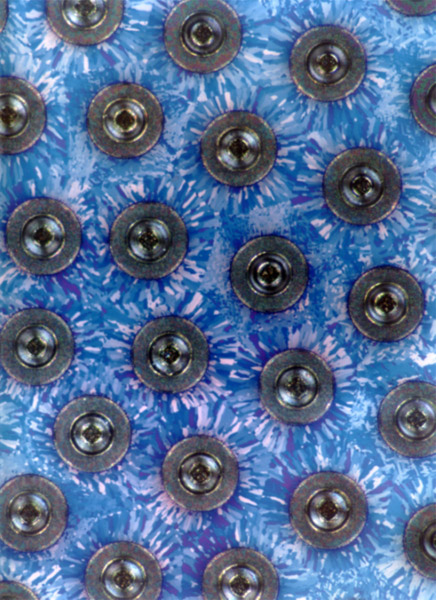
Composite consisting of a titanium
alloy matrix reinforced with long
fibersof silicon carbide (1991)
Improving the internal aerodynamics of compressors and turbines, controlling combustion phenomena at full load or at low speeds, the construction of materials with good mechanical resistance at high temperatures, and developing methods for calculating the life duration of materials are useful for both commercial and military aircraft.
With regard to materials, the development of single-crystal superalloys for the Snecma M88 (Rafale) engine turbine blades can be noted, as well as studies on thermal protection for blades (thermal barriers).
International scope
Since its creation, ONERA has not ceased to develop cooperation with aeronautical and aerospace research organizations from Europe, the United States, Canada, and - as from the 90s – from China, Japan and Russia. Notably in this period, the AEREA (which later became the REIA) was created in 1994 – an association of European research establishments in aeronautics, consisting at the beginning of the European counterparts ONERA (France), the DLR (Germany), CIRA (Italy), the NLR (Netherlands), and INTA (Spain).





